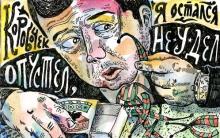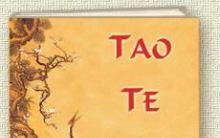The ancient Egyptians firmly believed that every animal was endowed with the greatest power, so their attitude towards them was filled with respect and sacred awe - as if they were carefully preserved relics. However, the most revered animal was the Egyptian cat goddess.
The emergence of the cat cult
Now it is difficult to explain the depth of cat worship that the Egyptian describes. If we boil it down to the simplest, we can say that people who lived in those days associated it with their home, love, marriage and, of course, a kind of protection from the devil.
The first hieroglyphs meaning the words “cat” and “cat” are deciphered as “mint” and “miu”, respectively. In Russian, the transcription of these words is similar to the familiar “meow” to our ears.
Quite a few figurines and drawings of cats have survived. On many of them you can see how a scarab beetle is placed on the chest of the sacred animal. This is another symbol revered in Egypt, with which the concept of life was associated.
As recounted in the documentary "Cats of Egypt: From Divinity to Squalor", these animals were brought from Nubia. Before they became common domesticated animals that people adore for their kindness, gentleness and grace, cats were protectors. They hunted small rodents and thereby saved provisions stored in barns. Cats are carriers of infection, such as plague, and thus prevented epidemics.
When Egypt became a powerful state, granaries formed the basis of its prosperity. Filled to the brim with wheat, they served as a guarantee of prosperity. For four whole months, when the Nile flooded, there was no need to fear hunger. To ensure the safety of grain, cats were required, mercilessly exterminating rats and mice.
Thus began the deification of these animals as creatures embodying specific gods in their images. Is it for this reason that the supreme sun god Ra was called the “great cat”? The cat-god Ra defeated the serpent of darkness - Apophis, and often the supreme god was depicted in the form of an animal, holding a knife with one paw and pressing the head of a serpent with the other.

The Egyptians associated the cat's pupils, enlarging under the influence of light, with the movement of the cat god Ra on a chariot along the heavenly rivers, and the animal's eyes glowing in the dark with the sign of a fiery chariot. When the sun rises, the cat's eyes become smaller; when it goes down, they increase in size.
The Egyptians compared the organ of vision of this unique animal to two reduced suns. For people, they were mystical windows into another world, to which mere mortals did not have access.
During the times of Ancient Egypt, cats were considered aliens from the afterlife, so the dwelling in which this animal lived would never be disturbed by a dark entity. Why? Because cats feel them and see them even in the dark, they will never let anyone into the house that they protect from the devil.
Notice how the Egyptian sphinx seems to freeze and direct its gaze to one point; perhaps at that moment it is in contact with someone who has come from a world invisible to humans.
Goddess Bastet and her sacred black cats
The most significant cult in Ancient Egypt was the cult of the cat goddess Bastet, which lasted until 1 BC. e.
Patronizes cats and the moon. Bastet holds a sistrum in his right hand and a basket in his left. She was usually dressed in green clothes. Goddess of fire, the Moon, childbirth, fertility, pleasure, fun, sexual rituals, music, dance, protection from illness and evil spirits, warmth, all animals (especially cats), intuition and healing.

Goddess Bast
Bast - goddess of fertility
Motherhood, sexuality, love, music. She is most often depicted as a woman with a cat's head, wearing a long, tight green dress, holding a basket or a sistrum, a musical instrument. Sometimes she can be seen with kittens playing under her feet - a symbol of motherhood. A black cat is dedicated to the goddess Bast, with whose head she is usually depicted.

In some myths, Bast is called the daughter of the sun god Ra
and the goddess of magic Isis, in others she is called the firstborn daughter of the sun god Amun. She became the wife of Ptah, the god of the city of Memphis, personifying the soft light of the rising sun, for which she was nicknamed the “sunny eye”. At first Bast was a solar goddess, later she began to symbolize the moon - waxing and waning. It is also called Bastet, Baset, Ubastet and Pasht.

The sacred city of the cat goddess was Bubastis
In her temple, rumored to have been built of red granite, there was a luxurious niche, densely overgrown with greenery, in which was the tomb of Bast. In the temple in Bubastis there lived many cats, which were groomed and cherished in every possible way, like a living personification of the goddess.
The sanctuary served not only as the main center for the deification of the sacred temple cats, but also as a burial place for thousands of deceased domestic animals. The Egyptians believed that beloved animals resting in a sacred place would carry their prayers to the gods. In 1887, the French archaeologist Edouard Naville discovered during excavations the main temple of Bubastis, cellars with mummies of cats and several royal tombs, obtaining evidence of the veneration of the goddess Bast by the Egyptian pharaohs
Bastet, and also the Woman and the CatIn Ancient Egypt, there was a very significant cult of the cat goddess Bastet (Bast), who was also considered the personification of sunlight and moonlight. The goddess was depicted as a maiden with a cat's head. Bastet was considered the daughter of Osiris and Isis.
Prayers were dedicated to her: “She can give life and strength, all the health and joy of the heart” or “I am a cat, the mother of life.” In her honor, cats were worshiped, they were mummified, and a mouse was placed nearby so that the cats would have something to entertain and eat in the afterlife.
Nowhere is the cat more revered than in Egypt. The complex metaphorical meaning that world mythology endowed with the image of this beautiful, intelligent animal was reduced by the Egyptians to positive, pleasant concepts for human consciousness -Such as goodness, home, fun, love, motherhood, fertility, protective forces.
Bastet's parents are Ra and Hathor, in addition, she was considered the Eye of the Sun God. She has a sister, Nut, and a brother, Khonsu, who was responsible for driving out evil spirits. Bast is married to Ptah (or Bes), the mother of the god Mahes. Her dark aspect was called Pasht.
Bast was revered as the goddess of fire, female beauty, youth, joy and sexual rituals. This goddess gave love and sensual pleasure, helped in music and dance classes. At the same time, she was responsible for home comfort and hearth, and patronized childbirth and fertility. Later, charity was added to her responsibilities. Among the mystics, Bastet was valued for her ability to protect against evil spirits and diseases, as well as for the gift of intuition, which she, as a lunar goddess, could bestow.
Doctors' homes were always painted with a black cat - a symbol of their profession.The ancient Egyptians loved and revered cats - this is evidenced by numerous papyri and paintings on the walls of tombs. Like other sacred animals - for example, falcons, ibises, crocodiles - cats acted as intermediaries between God and people. The Egyptians saw the cat as the embodiment of the goddess Bastet (the Greeks called her Bubastis).
The oldest images of cats, which have come down to us from Anatolia (the territory of modern Turkey) 6th century BC, from Jericho - 5th century BC, show several women playing with cats. Images of cats, usually striped or spotted, can be seen in drawings from Egypt and Pompeii.About 2.5 thousand years BC. in the inscriptions of the pyramids of the V and VI dynasties of the pharaohs there are symbols denoting cats - this was the heyday of their cult. The cult of cats was so great that it continued for more than 2 thousand years and was only abolished in 390 AD. Each city of Ancient Egypt had its own totem, i.e. guardian deity. The cat had several cities where she was revered above other gods.
Origin of cats. Where did they come from? Where is their homeland? The answer to this question may lie here in our memories of the past.
945 BC. A small boat sails along the calm Nile. In the boat, two figures in white are visible, they stand next to each other: a mature man, tall, fit. With one hand he holds on to the high bow of the boat, placing the other hand on the shoulder of his son, just a boy. They slowly approach the magnificent city.
“Father, tell me about this city and why we and thousands of other people are sailing here?” - “My son! We are sailing to the beautiful city of Bubastis - our capital, for the annual festival of the cat goddess Bast. The kind-hearted Bast is known for her miracles of healing. She is revered as the cheerful goddess of healing, music, happiness and joy. Thousands of pilgrims rush to the festival of Bubastis.
A huge temple was erected in her honor, there is a water canal next to the temple, all the streets intersect at this holy place. I will teach you a prayer: “Oh, Bast, moon-faced, powerful healer, beloved by millions. Clear in your temple, open your doors before me, illuminate my soul with your light, penetrate deep into my spirit, heal all my ailments...” Well , so we sailed, let’s hurry to the temple.”The boy was deeply shocked by the extraordinary sight that greeted him. The magnificent temple sparkles in the sun, everyone admires its snow-white columns and beautiful details. Laughter and cheers are heard throughout the area. Singing and clapping, the pilgrims ascend to the temple, shaking their rattles - a symbol of fertility. At the main entrance is a statue of the cat goddess, a goddess who had the power of the Sun and Moon to bring mental health.
The center of the Bast cult, the heyday of which dates back to the XXII dynasty (Bubastid) X-VIII centuries BC. e. - the city of Bubastis.
Bubastis was one of the most important cities of Ancient Egypt. Now we can judge the former pomp and splendor of this ancient city only from the surviving monuments and their fragments discovered by archaeologists.Attribute Bast - musical instrument sistrum. Often the goddess was depicted as a woman with the head of a cat, holding a sister in her hands, and four kittens at her feet. This is how the goddess of fertility was personified by the Egyptians. Bast's son is Mahes. In some cases Bast was identified with Mut, Tefnut, Sekhmet and Hathor.
Traditionally associated with the sun, fertility and successful childbirth in women. Bast has two incarnations - a woman with a cat's head (kind essence) and a lion's head (aggressive). It is believed that, being in the second form, Bast turns into Sekhmet - the lioness who once almost destroyed all of humanity. She was pacified only with the help of cunning - beer, tinted red with mineral dyes, was spilled on the ground. The lioness mistook this liquid for blood, got drunk and fell asleep.
Cats were good at exterminating snakes, and in addition, they were believed to have magical powers. The chronicles say that the god Ra took the form of a cat before a battle with the serpent of the night and, thanks to this, magically delayed the rays of the sun.
These animals were treated with trepidation, since they were seen as the earthly incarnation of the goddess Bast. They were considered good spirits of the home and they believed that the soul of the deceased mistress of the house inhabited the cat. If a cat died, its owners and even all their relatives shaved their eyebrows as a sign of mourning. The animal was buried like a pharaoh: the body was embalmed and mummified, placed in a sarcophagus, and then placed in a necropolis specially designated for it.
Cat mummy. Louvre
Killing a cat was punishable by death. Even if the driver ran over the animal by accident, people stoned it to death.
The Egyptians elevated the goddess of fertility to the rank of a national deity. The owners even shaved off their eyebrows in memory of the deceased cat, and the crowd stoned the driver who accidentally ran over the cat to death. And even the pharaohs performed sacrifices in the Bastet temple.Herodotus reported annual celebrations in honor of Bast, which were accompanied by dancing.
By the Greeks, Bastet was identified with Artemis, and sometimes with Aphrodite.
Cats occupy a large place in visual creations.
In artistic works they used fashionable allegory and endowed cats with human traits.Woman and cat
Played with my cat
She, and the evening lasted
Lovely in the shadows
Fight of a white hand with a white foot.Naughty - cunning! - melting
Under the lace of black gloves
Agate edge nails,
Like a razor sharp and agile.And she cheated with the lady,
Taking in your steel claw, -
But the devil did not lose anything;And in the boudoir, where, ringing,
Airy laughter fluttered, sparkled
Four phosphorus lights.Paul Verlaine (Translation by Georgy Shengeli)
Femme et chatte
Elle jouait avec sa chatte,
Et c"était merveille de voir
La main blanche et la blanche patte
S"ébattre dans l"ombre du soir.Elle cachait - la scélérate! -
Sous ces mitaines de fil noir
Ses meurtriers ongles d"agate,
Coupants et clairs comme un rasoir.L'autre aussi faisait la sucrée
Et rentrait sa griffe acérée,
Mais le diable n"y perdait rien...Et dans le boudoir où, sonore,
Tintait son rire aérien,
Brillaient quatre points de phosphore.
Paul VerlaineHide your claws, kitty; here, on my chest,
That I always embrace you with tender caress,
And let my eyes drown in your eyes,
Where the cold shine of metal and agate merges!When I caress your head,
That flexible back with your careless hand,
When, pensive, I catch a bright swarm
Electric sparks, touching you tenderly,A familiar vision arises in my soul:
Her emotionless, her cold gaze
It pierces my chest like steel, without regret,And from head to toe, like a delicate aroma,
Around the dark man's body there is a stream of deadly poison,
She is with me again, as in previous moments.Charles Baudelaire translated by Ellis
Pierre Auguste Renoir Woman with a catParlato Giovanni Woman with a cat
Fattah Galla. Girl in Lotuses
Fattah Galla. Girl Summer
Fattah Galla
Fattah Galla
Sergey Brandt
Shenzhen,China. woman with cat
Artist Krivenchenko Sergey
Ira Tsantekidou. Two cats
THE MORE I LOOK AT THE WORKS OF DIFFERENT ARTISTS WITH IMAGES OF WOMAN AND CATS, THE MORE I FIND THAT WOMEN AND CATS ARE VERY SIMILAR EVEN IN APPEARANCE))) LOOK AT THEIR FACES!
Women and cats are united by a single energetic mood, related
their sixth sense is intuition, subtle emotionality... Experiencing the influence of a cat, a woman gradually begins to change herself, opening up like a flower, and often changes her life. After all, among other things, a cat is better than any psychotherapist or psychoanalyst in helping you get rid of complexes, liberate yourself, become stronger and... in the end, start a new life.In a word, a cat is an eternal mystery that cannot be completely solved, but it is mysterious women who have attracted men from time immemorial. Moreover, in literature and in life, a certain dangerous and attractive image of a “cat woman” has developed - sensual and feline-sexual, strong and independent, beautiful and mysterious... Such women have always been especially attractive to men and have had a significant influence on events happening in the world.
You know how to cuddle like a cat.
You, like a cat, know how to bite and play.
And like a cat you know how to bask.
You are like a cat, Flexible and fast and, like a cat, graceful and beautiful.
You'll show your claws like a cat and lie down on your knees.This is still the case today. They charm and get their way, bringing out the best in both women and cats.
Tatyana Gorshunov
We are naive, blue eyes
From novels of old years.
Our smooth bandages,
Like us, the whole world forgot.We are extremely friendly.
The rays of the day are not so pure,
Like cherished thoughts are a secret.
Like azure, we have dreams.We run away to the clearings,
As soon as the shadow of the night falls,
We catch butterflies and chat
And we laugh all day long.Under straw hats
There is no way for us to get a tan.
Dresses are light rags,
Where could they have found a whiter one?Richelieu, ile des Caussades,
Or Cavalier Phoblaz
Luring us into ambushes
Tender words and languid eyes.But their habits are in vain,
And only one will see
Ironic folds
They are our skirts.Their imagination teases them
All these daredevils
Our pure contempt
At least sometimes from sweet wordsThe heart begins to beat
In the charm of secret thoughts
And in anticipation - to fall in love
It wouldn't be necessary at random.
Paul Verlaine
Original post and comments at
Bastet and Sekhmet - two forms of one goddess
In Ancient Egypt, cats occupied a special place. They were worshiped and protected. The cat was a member of the family, and if it died, the Egyptians mourned for it and shaved off its eyebrows. During fires, cats were the first to be taken out of houses, and the person who killed this animal was given a painful death penalty. Cats were mummified after death and buried in a special cemetery. During excavations in Egypt, many cat mummies were discovered, as well as figurines with their images. Little purrs brought a lot of warmth and joy into the house. Their grace was mesmerizing, and their ability to reproduce and protect their offspring left the Egyptians in awe. It is no coincidence that the cat-headed goddess Bast was considered the goddess of joy, beauty, grace and fertility.
Bast or Bastet was most often depicted as a woman with a cat's head, who had a musical instrument in her hands, and four kittens sitting at her feet. There were also drawings where the goddess was holding a basket with cats in her hands, or feeding kittens, looking at the animals with tenderness and care. Great holidays were held in honor of the goddess, and her temples were very popular in Egypt. Kind, meek, caring, she personified the very essence of women.
But the goddess also had a second hypostasis - Sekhmet, a woman with the head of a lioness. She personified war and the heat of the sun, she also commanded magical power, she was worshiped by doctors and healers. The mighty Sekhmet could heal and kill. And myths were written about her hot-tempered and formidable character, thirst for human blood. With her hot breath she brought drought, pestilence and disease. Sekhmet was also turned to in moments of despair, and the priests in the temples, as a rule, had the skills of doctors. She is the only goddess from the Egyptian pantheon to whom blood sacrifices were made.
There is a myth that the goddess once almost destroyed Egypt. The gods became angry with people, punishing them for their greed, avarice, and cowardice. They sent Sekhmet to earth. The goddess swept through Egypt like a terrible tornado, where she passed, only the victims of her rage remained. But the more the goddess killed, the stronger her thirst for blood. The other gods, seeing what the lioness had done, were horrified. To stop Sekhmet, they spilled beer on the ground, colored the color of blood. Sekhmet mistook the beer for blood, drank it, and fell into a deep sleep. So the gods saved the earth from destruction.
During the holidays, the Egyptians gave each other medallions with the image of a cat or lioness. It was believed that such an amulet would bring good luck. In modern Egypt, you can also buy a similar medallion as a souvenir, as well as many figurines depicting Sekhmet or Bastet.
Bast (cat) is the goddess of joy, love, fun, fertility, moonlight and sunlight. The Egyptians attributed magical properties to the cat. The Egyptian god Ra had a cat's head, and the goddess of fertility and motherhood Bastet was usually depicted with the body of a woman and the head of a cat.
In some myths, Bast is called the daughter of the sun god Ra and the goddess of magic Isis, in others she is called the firstborn daughter of the sun god Amon Ra. She became the wife of Ptah, the god of the city of Memphis, personifying the soft light of the rising sun, for which she was nicknamed the “sunny eye”. At first Bast was a solar goddess, later she began to symbolize the moon - waxing and waning.

The center of the cult of the Goddess Bastet was the ancient city of Bubastis in the Nile Delta. Here the worship of the domestic cat was most expressed. The temple dedicated to the Goddess Bastet dates back to the earliest cat cult. It was built by the same pharaohs who erected the Sphinx statues. In 945 BC, Bubastis became the capital of all Egypt. The local Goddess Bastet was elevated to the rank of a national deity.

In Europe, as in Egypt, the cat was considered the goddess of fertility. With the advent of Christianity, the Cat goddess was proclaimed a she-devil. It became an integral part of witchcraft rituals. And for many centuries cats were subjected to terrible torture, thousands were burned alive.
Torture of cats stopped only in the 18th century. At this time, scientists begin to write the first books about the psychology and behavior of these animals. In 1871, Harrison Ware organized the first cat show in London.

Goddess Bast is primarily the patroness of all women. Because Goddess Bast is a catwoman. She loves freedom, she is the goddess of love, she is confident, she is free! She can help in the birth of a child. She is the Goddess of dance, protection from disease and evil spirits, intuition, healing, marriage and all animals (especially cats). And don't forget that Goddess Bast has another side to Pasht. That's why she's stubborn and cunning! And he shows his claws for insult.


The Egyptians themselves looked at the cat not only as a beloved creature, but as a representative of a deity. And therefore they treated her with respect and respect. Then what they received from her had a different quality, carried more purity and light, she became for them a transmitter of divine energies. At the same time, these goddesses were considered as guardians of the area and property, and the carved figurines had a deep symbolic meaning. The Greeks called these sculptures "sphinxes".

Since time immemorial, women have wanted to reveal the secrets of unfading beauty and eternal youth. Whatever they did to always remain the most attractive and charming! The priests who worshiped Bast created a whole system of exercises that Egyptian women often used to remain charming and attractive. It was believed that at the moment when the exercises were performed, the spirit of the goddess entered into each woman and awakened her hidden powers of divine plasticity and grace.

During the early dynasties, before the cat was domesticated, the goddess Bast was depicted as a lioness.











Church of the Savior and Kazan Icon of the Mother of God
All about salads that are prepared in Spain in the summer Tuna salad
Favorite homemade dessert: crispy waffles, like when I was a kid
Recipe for hot beetroot soup Cooking beetroot soup like in kindergarten
Pickled red cabbage recipes